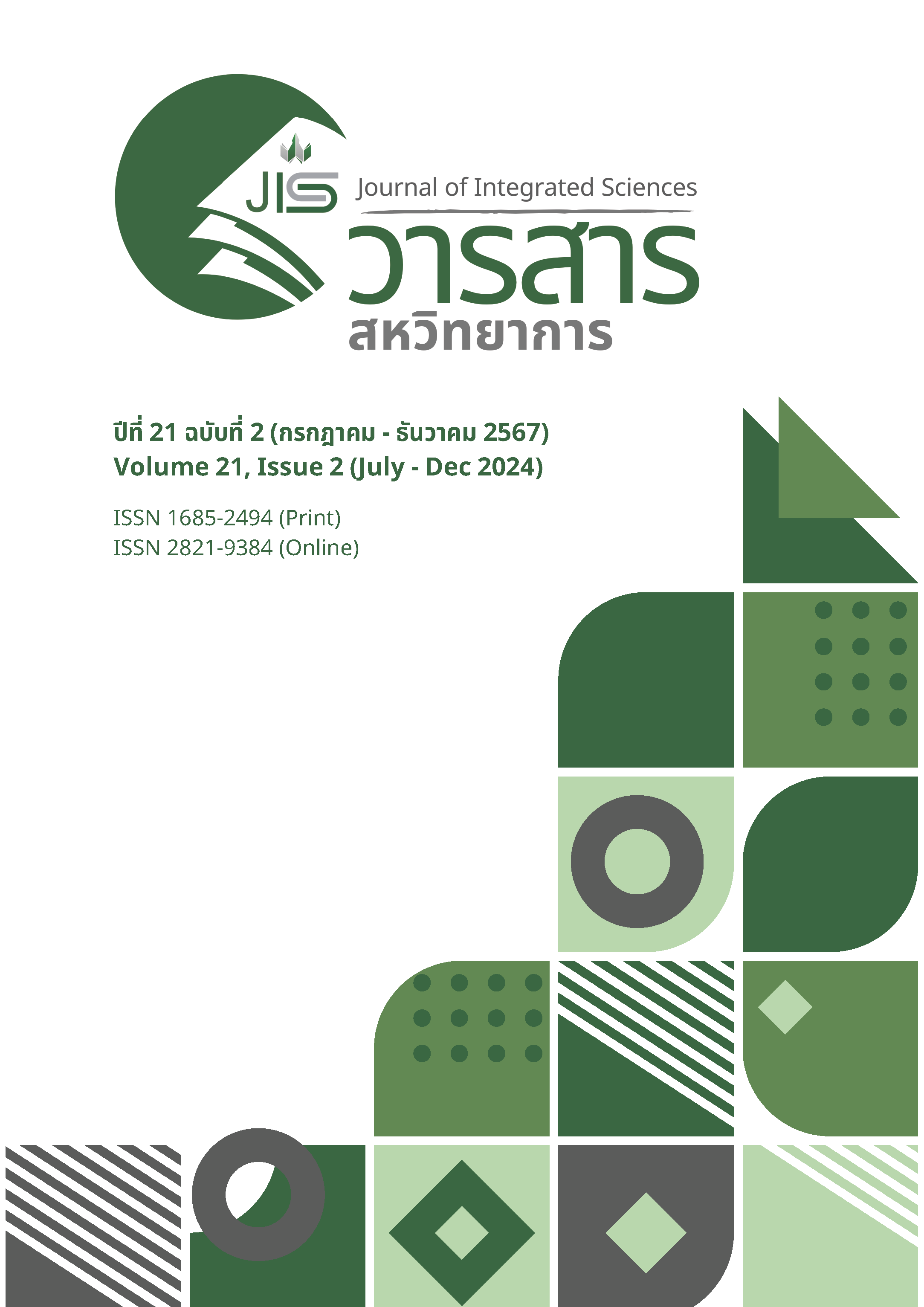Loanwords from Northern Thai and Standard Thai in The Shan Language of Speakers in Ban Wiangwai, Monpin Sub-District, Fang District, Chiangmai Province
Keywords:
Loanword, Shan language, Northern Thai, Standard ThaiAbstract
This article aims to analyze the types of loanwords borrowed from Northern Thai and Standard Thai in the Shan language spoken by the community in Ban Wiangwai, Monpin Sub-district, Fang District, Chiangmai Province. Data was collected from a total of 15 Shan speakers. The results show that Shan speakers in Ban Wiangwai borrowed words from Northern Thai and Standard Thai. These words fall into 10 categories: nouns, classifiers, pronouns, verbs, adjectives and adverbs, prepositions, conjunctions, final particles, interjections, and negatives. A total of 1,871 words were analyzed, consisting of 836 Shan words, 733 Northern Thai loanwords, and 302 Standard Thai loanwords. The loanwords in the Shan language are primarily derived from both Northern Thai and Standard Thai, sharing similar characteristics. Among the loanwords, nouns are the most frequently borrowed, followed by verbs, adjectives and adverbs. These categories constitute core vocabulary. Grammatical words - including pronouns, classifiers, prepositions, conjunctions, final particles, interjections, and negatives - were also borrowed from Northern Thai and Standard Thai, though in smaller numbers. These loanwords effectively illustrate the linguistic changes occurring in the Shan language within this community.
References
จรรยา พนาวงค์ และอุไรวรรณ แก้วคำมูล. (2546). ประวัติศาสตร์ชุมชนบ้านเวียงหวาย ตำบลม่อนปิ่นอำเภอฝาง จังหวัดเชียงใหม่. เชียงใหม่: ม.ป.พ.
ซิ่วหง ฉิน. (2554). การเปลี่ยนแปลงของภาษาจ้วงอันเกิดจากภาวะสัมผัสภาษาจ้วงกับภาษาจีนกลาง. (วิทยานิพนธ์ ปริญญาอักษรศาสตรดุษฎีบัณฑิต, จุฬาลงกรณ์มหาวิทยาลัย). สืบค้นจาก https://cuir.car.chula.ac.th/bitstream/123456789/22245/3/xiuhong_qi.pdf
ฐิติกาญจน์ ใจไมตรี และอุมาภรณ์ สังขมาน. (2559). การศึกษาการแปรคำศัพท์ในภาษาพวนบ้านหมี่ จังหวัดลพบุรี. วารสารวิชาการมนุษยศาสตร์และสังคมศาสตร์, 24(45), 245-262.
พรรณิดา ขันธพัทธ์. (2020). การเปรียบเทียบคำยืมในภาษาไทใหญ่. วารสารศิลปศาสตร์ มหาวิทยาลัยสงขลานครินทร์, 12(2), 121-146.
มหาวิทยาลัยราชภัฏเชียงใหม่. (2552). พจนานุกรมภาษาไทใหญ่-ไทย (พิมพ์ครั้งที่ 2). เชียงใหม่: แสงศิลป์.
รัตนา จันทร์เทาว์. (2554). การสัมผัสภาษา: ภาษาไทยและภาษาลาวของคนลาว. วารสารสังคมลุ่มน้ำโขง, 7(3), 121-134.
ราชบัณฑิตยสถาน. (2557). พจนานุกรมศัพท์ภาษาศาสตร์ (ภาษาศาสตร์ประยุกต์) ฉบับราชบัณฑิตยสถาน (พิมพ์ครั้งที่ 2). กรุงเทพฯ: ราชบัณฑิตยสถาน.
วิจินตน์ ภาณุพงศ์ และคณะ. (2564). บรรทัดฐานภาษาไทย เล่ม 3: ชนิดของคำ วลี ประโยค และสัมพันธสาร (พิมพ์ครั้งที่ 4). กรุงเทพฯ: สกสค.
สุวัฒนา เลี่ยมประวัติ. (2551). การศึกษาภาษาถิ่น: ภาษาตระกูลไท. นครปฐม: ภาควิชาภาษาไทย คณะอักษรศาสตร์ มหาวิทยาลัยศิลปากร.
สุวัฒนา เลี่ยมประวัติ. (2556). การแปรการใช้ศัพท์ของคนสามระดับอายุในภาษาไทดำ อำเภอเขาย้อย จังหวัดเพชรบุรี. วารสารมหาวิทยาลัยศิลปากร ฉบับภาษาไทย, 33(1), 149-173.
อมรา ประสิทธิ์รัฐสินธุ์. (2548). ภาษาในสังคมไทย: ความหลากหลาย การเปลี่ยนแปลง การพัฒนา (พิมพ์ครั้งที่ 4). กรุงเทพฯ: จุฬาลงกรณ์มหาวิทยาลัย.
อรรถวิทย์ รอดเจริญ, อุบลวรรณ สวนมาลี, และประเทือง ทินรัตน์. (2559). การศึกษาเชิงสำรวจ: การ สัมผัสภาษาของผู้พูดภาษาไตหย่า อำเภอซินผิง มณฑลยูนนาน สาธารณรัฐประชาชนจีน. วารสารวิชาการมนุษยศาสตร์และสังคมศาสตร์. 24(46). 331-347.
McMahon, M.S. (1994). Understanding Language Change. Cambridge: Cambridge University Press.
Thomason, S. G. & Kaufman, T. (1988). Language contact, Creolization and Genetic Linguistics. Berkeley: University of California Press.
Thomason, S. G. (2001). Language contact: an introduction. Washington D.C.: Georgetown University press.
Downloads
Published
How to Cite
Issue
Section
License
Copyright (c) 2024 Journal of Integrated Sciences

This work is licensed under a Creative Commons Attribution-NonCommercial-NoDerivatives 4.0 International License.
บทความทัศนะ ข้อคิดเห็น ภาพที่ปรากฏ ในวารสารเล่มนี้เป็นความคิดเห็นส่วนตัวของผู้เขียน บรรณาธิการและกองบรรณาธิการไม่จำเป็นต้องเห็นพ้องด้วย และไม่ถือเป็นความรับผิดชอบ ลิขสิทธิ์เป็นของผู้เขียนและวิทยาลัยสหวิทยาการ มหาวิทยาลัยธรรมศาสตร์ การตีพิมพ์ชื่อต้องได้รับอนุญาตจากผู้เขียน และวิทยาลัยสหวิทยาการโดยตรง และเป็นลายลักษณ์อักษร






